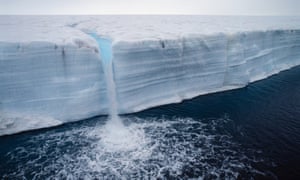Meltwater from Greenland creates freshwater pond at the ocean surface that whips ups storms in northern Europe
Last winter, it was Storm Ciara and Storm Dennis that brought misery to northern Europe. The previous winter it was Ali that caused damage in Ireland. Those with longer memories may recall the devastation caused by Desmond, Eva and Frank during the winter of 2015-16. Now scientists have managed to pin down the cause, showing that rapid melting in the Arctic has increased the likelihood of violent winter storms in the northern hemisphere.
Using the ocean temperature and salinity measurements recorded by the Argo floats, along with satellite records of sea surface temperature and meteorological data, Dr Marilena Oltmanns, from the National Oceanography Centre in Southampton, and colleagues analysed the impact that increased ice melt may be having.
Their results, published in Geophysical Research Letters, show that the unusually large discharges of meltwater from Greenland and the Arctic in the last few years created a lasting freshwater pond at the ocean surface. Because freshwater cools faster than saltwater this pond has increased the temperature difference from north to south and helped to trigger some of the extreme winter storms seen in northern Europe. Oltmanns and her colleagues anticipate that increased melting in future years is likely to whip up storms of even greater intensity and barrel them towards northern Europe.

No comments:
Post a Comment